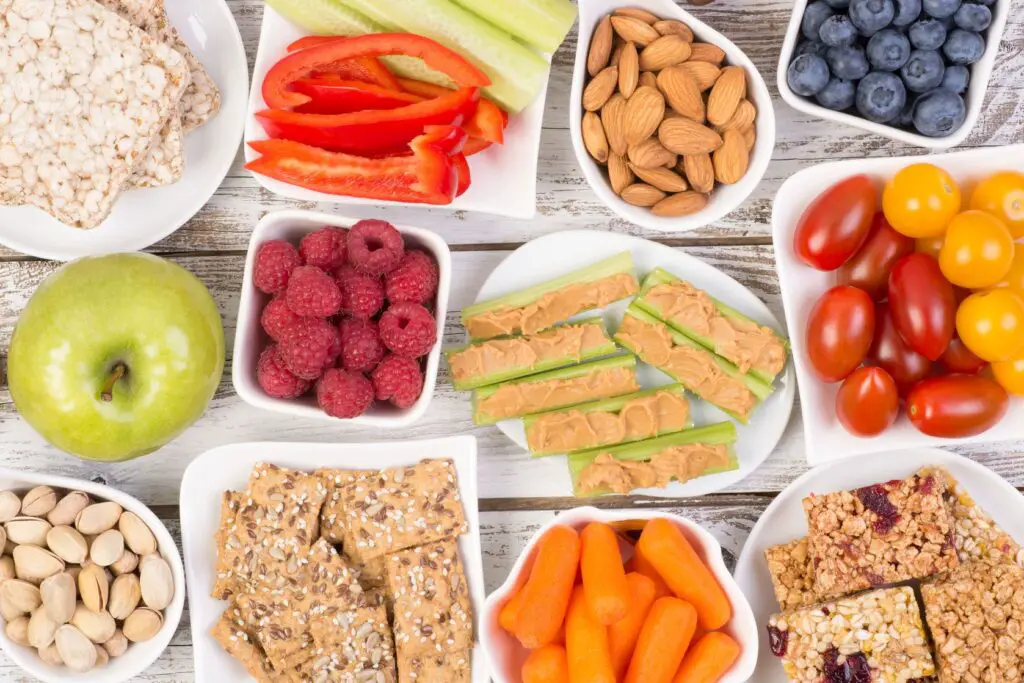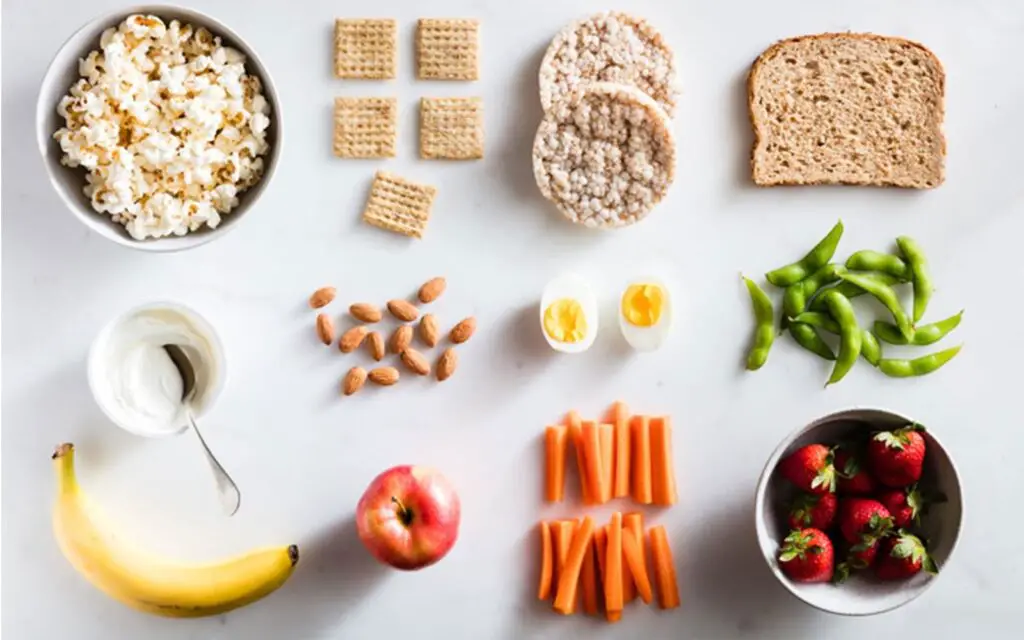Introduction
Are Fiber One Bars Good For Weight Loss: Fiber One bars have gained a reputation as a weight loss-friendly snack option primarily due to their high fiber content. These bars typically contain anywhere from 9 to 14 grams of fiber per serving, making them a convenient way to boost your daily fiber intake. Fiber is well-known for its ability to increase feelings of fullness and curb hunger, which can be advantageous when trying to reduce calorie consumption and manage weight.
The satiety-promoting effects of fiber are attributed to its ability to absorb water and expand in the stomach, creating a sense of fullness that can help prevent overeating. Additionally, fiber can slow down the digestion and absorption of nutrients, including carbohydrates, which may help stabilize blood sugar levels and reduce cravings for sugary or high-calorie snacks.
Furthermore, Fiber One bars are often relatively low in calories, with most varieties containing around 150 to 200 calories per bar. This calorie range can fit well within a balanced diet for weight loss, especially when used as a snack to stave off mid-day cravings or as a substitute for higher-calorie desserts.

Is fiber bars good for weight loss?
Fiber bars are convenient. Their fiber content may promote digestive health, satiety, weight control, cholesterol management, and blood sugar management.
Advantages of Fiber Bars for Weight Loss
Satiety and Appetite Control: Fiber is known for its ability to promote feelings of fullness. Fiber bars can be a satisfying snack, potentially reducing the urge to overeat and aiding in calorie control.
Convenience: Fiber bars are readily available and require no preparation. They are a convenient option for busy individuals seeking a quick and healthy snack.
Regularity: The fiber in these bars can aid in maintaining regular bowel movements, which is essential for overall health and well-being.
Calorie Management: Many fiber bars are relatively low in calories, making them a calorie-conscious choice for those aiming to lose weight.
Considerations and Disadvantages
Added Ingredients: Some fiber bars may contain added sugars, artificial sweeteners, or other ingredients that can detract from their health benefits. It’s crucial to read the ingredient list and select bars with minimal additives.
Portion Control: While fiber bars can help control appetite, it’s still essential to practice portion control and monitor overall calorie intake.
Nutritional Balance: Relying solely on fiber bars for nutrition is not recommended. A balanced diet should include a variety of whole foods to provide essential nutrients.
Individual Response: The effectiveness of fiber bars for weight loss can vary from person to person. What works for one individual may not work as effectively for another.
Are Fibre One bars actually healthy?
Conclusions. Overall, fiber one bars are not considered healthy due to some of their highly processed ingredients. However, they are a good source of fiber. If you’re looking for a healthy snack option, making your own fiber bars at home using non-processed ingredients is better.
Nutritional Profile of Fiber One Bars
Fiber One bars are known for their impressive fiber content, with most varieties containing between 9 to 14 grams of fiber per serving. This high fiber content primarily comes from ingredients like chicory root extract and various grains. Fiber is essential for digestive health, as it aids in regular bowel movements and can help prevent constipation.
Moreover, Fiber One bars typically have a relatively low calorie count, with most bars containing around 150 to 200 calories per serving. This can be appealing to those who are mindful of their calorie intake, especially when seeking a satisfying and nutritious snack.
Advantages of Fiber One Bars
Digestive Health: The high fiber content in these bars can help promote regular bowel movements and support digestive health.
Satiety: Fiber is known for its ability to promote feelings of fullness, which can be helpful for managing appetite and preventing overeating.
Convenience: Fiber One bars are convenient and portable, making them an easy on-the-go snack option.
Lower Calorie Option: Compared to many other snack choices, Fiber One bars are often lower in calories, which can be beneficial for those looking to manage their weight.
How many Fiber One bars should I eat a day?
Each serving of a Fiber One product provides 5 g of fiber. Eating more than 5 servings per day could be more fiber than you need.
Consider Your Dietary Goals
The number of Fiber One bars you should eat in a day depends on your specific dietary goals and overall caloric needs. If your primary goal is to increase your daily fiber intake, one bar may be sufficient to help you meet that goal. However, if you’re using Fiber One bars as a snack to curb hunger or as part of a weight loss plan, you might consume up to two or even three bars throughout the day, provided it fits within your daily calorie budget.
Pay Attention to Fiber Intake
The recommended daily fiber intake varies depending on factors like age, sex, and activity level. In general, adult women should aim for at least 25 grams of fiber per day, while adult men should target around 38 grams. If you’re using Fiber One bars to boost your fiber intake, keep track of your total daily fiber consumption from all sources, including fruits, vegetables, grains, and other foods. Eating too much fiber in a short period can lead to digestive discomfort, including gas and bloating.
Read Labels Carefully
The nutritional content of Fiber One bars can vary among different flavors and varieties. Pay close attention to the label to understand how many grams of fiber are in each bar. Some Fiber One bars contain as little as 9 grams of fiber per serving, while others may have up to 14 grams. The goal is to balance your fiber intake with your overall nutritional needs.
Avoid Overreliance
While Fiber One bars can be a convenient snack option, they should not replace balanced meals. Overreliance on processed snacks, even if they are high in fiber, can result in an imbalanced diet lacking in essential nutrients. Ensure that you continue to include a variety of whole foods in your diet to meet your nutritional requirements.
Stay Hydrated
Increasing your fiber intake, whether through Fiber One bars or other sources, can lead to increased water absorption in your digestive tract. To prevent potential digestive discomfort, it’s essential to stay well-hydrated throughout the day by drinking an adequate amount of water.
Are Fiber One bars actually 70 calories?
Diets high in fiber can help keep your digestive system on track. Choose Fiber One Chewy Granola Bars for your breakfast bars, office snacks or as an on-the-go treat. Contains 70 calories, five grams net carbs, and one gram sugar per serving for a snack to keep you going.
Calorie Variations in Fiber One Bars
Different Flavors and Types: Fiber One offers a range of bar flavors and types, such as brownies, protein bars, and original bars. The calorie content can vary significantly between these options. While some Fiber One bars may indeed contain around 70 calories, others can have more or fewer calories based on their ingredients and serving size.
Serving Size: Pay close attention to the serving size specified on the label. For instance, one Fiber One bar might have a serving size of 1 bar (typically around 24-40 grams), while another could have a larger serving size. The calorie count listed is for that specific serving size.
Added Ingredients: The addition of ingredients like chocolate chips, nuts, or caramel can impact the calorie count. Some Fiber One bars with added indulgent components may have higher calories.
Interpreting Calorie Information
Check the Label: Always read the nutritional label on the specific flavor and type of Fiber One bar you’re considering. The calorie count will be clearly stated for the specified serving size.
Evaluate Your Needs: Consider your dietary goals and calorie requirements. If you’re monitoring your calorie intake, ensure that the bar’s calories align with your daily goals. For some, a 70-calorie bar may be suitable for a snack or dessert, while others may need more substantial options.
Consider Your Preferences: Take into account your flavor preferences and the ingredients you enjoy. The most nutritious choice may not always be the lowest in calories.
Balanced Diet: Keep in mind that while calorie counting is important, the overall quality of your diet is equally crucial. Fiber One bars should be part of a balanced diet that includes a variety of nutrient-rich foods.
Will I lose weight if I take fiber everyday?
Eating more foods rich in fiber — especially viscous fiber — can be an effective strategy to lose weight. However, like many weight loss methods, it won’t lead to long-term results unless you pair it with a lasting lifestyle change.
How Does Dietary Fiber Work?
Dietary fiber is a type of carbohydrate found in plant-based foods like fruits, vegetables, whole grains, legumes, and nuts. Unlike other carbohydrates, the body cannot digest fiber. Instead, it passes through the digestive tract largely intact. Fiber can be divided into two main types: soluble and insoluble.
Soluble Fiber: Dissolves in water to form a gel-like substance in the digestive tract. This type of fiber can help slow down digestion and the absorption of nutrients, including sugars, leading to more stable blood sugar levels.
Insoluble Fiber: Adds bulk to stool and helps promote regular bowel movements. It also contributes to a feeling of fullness.
The Role of Fiber in Weight Management
Satiety and Appetite Control: One of the key ways fiber may support weight management is by increasing feelings of fullness. Soluble fiber, in particular, can create a sense of satiety, reducing the likelihood of overeating or snacking on high-calorie foods.
Calorie Reduction: Foods high in fiber, like fruits and vegetables, often have fewer calories per serving compared to calorie-dense, processed foods. Choosing fiber-rich options can help you maintain a calorie deficit, which is essential for weight loss.
Blood Sugar Regulation: Soluble fiber can help stabilize blood sugar levels, reducing cravings for sugary and high-carb snacks that can lead to weight gain.
Gut Health: A healthy gut microbiome, supported by a fiber-rich diet, may play a role in weight management. A diverse microbiome can influence how your body processes food and manages weight.
Can fiber burn belly fat?
Research suggests soluble fiber may help you lose weight and belly fat. It’s a natural appetite suppressant found in plant-based foods.
The Role of Fiber in Belly Fat Reduction
Satiety and Reduced Calorie Intake: Fiber-rich foods can promote feelings of fullness and reduce overall calorie intake. By consuming fewer calories, you create a calorie deficit, which is essential for fat loss, including belly fat.
Blood Sugar Regulation: Soluble fiber, found in foods like oats and legumes, can help stabilize blood sugar levels. This can prevent insulin spikes, which are associated with fat storage in the abdominal area.
Lower Caloric Density: Many fiber-rich foods are low in calorie density, meaning they provide fewer calories for their volume. This encourages you to consume more substantial portions while still maintaining a calorie deficit.
Reduced Inflammation: Chronic inflammation is linked to the accumulation of visceral fat. Fiber has anti-inflammatory properties and may help reduce inflammation in the body.
Gut Microbiome Health: A healthy gut microbiome, influenced by dietary fiber, may play a role in weight management and fat distribution. An imbalance in gut bacteria can contribute to weight gain, including abdominal fat.
Can I eat a fiber one bar everyday?
It is not recommended to eat more than one Fiber One bar per day. It is important to consume a variety of nutrients from a balanced diet and to not rely on a single food or supplement as the sole source of fiber.
Advantages of Eating Fiber One Bars Daily
Increased Fiber Intake: Consuming a Fiber One bar daily can significantly boost your daily fiber intake, which is essential for digestive health. Adequate fiber intake promotes regular bowel movements and can prevent constipation.
Satiety and Weight Management: The high fiber content in Fiber One bars can help promote feelings of fullness and curb appetite. This can be beneficial for those looking to manage their weight or reduce calorie consumption.
Convenience: Fiber One bars are a convenient and portable snack option, making them suitable for busy individuals who need a quick and nutritious on-the-go option.
Regularity: The fiber in these bars can help maintain regular bowel movements, which is essential for overall digestive well-being.
Important Considerations
Added Ingredients: Some Fiber One bar varieties may contain added sugars, artificial sweeteners, or other ingredients that may not align with your dietary preferences or health goals. It’s crucial to read the ingredient list carefully and select options with minimal additives.
Portion Control: Even though Fiber One bars can promote fullness, it’s important to practice portion control and be mindful of your overall calorie intake. Consuming too many calories, even from healthy snacks, can hinder your weight management goals.
Nutritional Balance: While Fiber One bars can be a valuable addition to your diet, they should not replace balanced meals. A well-rounded diet should include a variety of whole foods to provide essential nutrients.
Individual Variability: How Fiber One bars affect you may vary from person to person. Some individuals may experience digestive discomfort or bloating when increasing their fiber intake. It’s essential to listen to your body and consume them in moderation.
Are Fibre One bars actually 90 calories?
Each Fibre One bar is individually wrapped and provides fewer than 90 calories. Fibre One bars may be delicious but they are also high in fibre – that’s one more step towards your daily fibre needs.
Calorie Variations in Fiber One Bars
Different Flavors and Types: Fiber One offers a range of bar flavors and types, such as brownies, protein bars, and original bars. The calorie content can vary significantly between these options. While some Fiber One bars may indeed contain around 90 calories, others can have more or fewer calories based on their ingredients and serving size.
Serving Size: Pay close attention to the serving size specified on the label. For instance, one Fiber One bar might have a serving size of 1 bar (typically around 24-40 grams), while another could have a larger serving size. The calorie count listed is for that specific serving size.
Added Ingredients: The addition of ingredients like chocolate chips, nuts, or caramel can impact the calorie count. Some Fiber One bars with added indulgent components may have higher calories.
Interpreting Calorie Information
Check the Label: Always read the nutritional label on the specific flavor and type of Fiber One bar you’re considering. The calorie count will be clearly stated for the specified serving size.
Evaluate Your Needs: Consider your dietary goals and calorie requirements. If you’re monitoring your calorie intake, ensure that the bar’s calories align with your daily goals. For some, a 90-calorie bar may be suitable for a snack or dessert, while others may need more substantial options.
Consider Your Preferences: Take into account your flavor preferences and the ingredients you enjoy. The most nutritious choice may not always be the lowest in calories.
Balanced Diet: While calorie counting is important, the overall quality of your diet is equally crucial. Fiber One bars should be part of a balanced diet that includes a variety of nutrient-rich foods.

Conclusion
Fiber One bars can indeed be a useful component of a weight loss strategy for many individuals. Their high fiber content, which promotes satiety and helps control appetite, can assist in managing calorie intake and making it easier to adhere to a calorie deficit necessary for weight loss. Moreover, their relatively low calorie content makes them a convenient and satisfying snack option.
However, it’s crucial to emphasize that while Fiber One bars can contribute to weight loss, they should not be the sole focus of a weight management plan. A well-rounded and balanced diet that includes a variety of whole foods is essential for providing the body with a broad spectrum of nutrients. Additionally, mindful portion control and attention to the ingredient list are key considerations when incorporating these bars into your diet.
Ultimately, the effectiveness of Fiber One bars for weight loss may vary from person to person, as individual preferences, dietary needs, and responses to different foods can differ significantly. Therefore, it’s advisable to consult with a healthcare or nutrition professional to create a personalized weight loss plan tailored to your specific goals and requirements. In this context, Fiber One bars can be a valuable tool when used in conjunction with a comprehensive, health-conscious approach to weight management.

